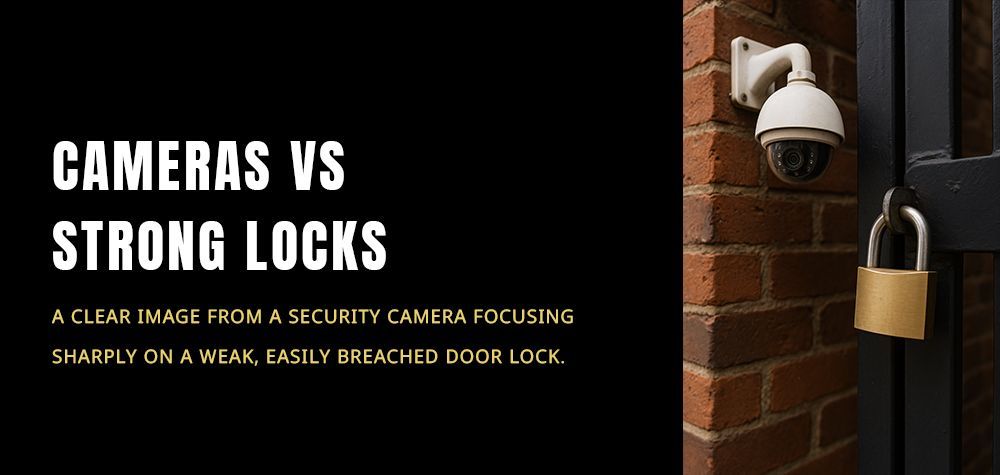Car Door Lock Freezes in Winter? Here’s What to Do
Few things are more frustrating on a freezing winter morning than walking up to your car, inserting your key—or pressing your key fob—and discovering that the car door lock is frozen shut. It won’t turn. It won’t open. And you’re left out in the cold, both literally and figuratively.
If this has happened to you, you’re not alone. Car door locks and latches are especially vulnerable in freezing weather, but the good news is, there are safe, effective ways to deal with this problem—and even prevent it from happening again.
In this article, we’ll explain why your car door lock freezes, how to safely unfreeze it, and the best ways to protect your locks through winter.
How to Tell If Your Car Key Chip Is Damaged
Why Do Car Door Locks Freeze?
Car locks freeze when moisture enters the locking mechanism or door seal and then turns to ice in cold temperatures. This can happen through:
- Rain or melted snow that seeps into the keyhole or door seam
- Condensation inside the lock housing
- Washing your car in the winter without drying the locks properly
- Old or worn weather stripping that allows water inside
Once frozen, the internal parts of the lock (like tumblers, latches, or linkages) get stuck in place, making it impossible to turn the key or open the door—even with a remote.
Signs Your Lock Is Frozen (Not Broken)
Before you try anything, make sure the issue is actually a frozen lock, not a mechanical failure. Here’s how to tell:
- The key won’t go in all the way, or it does but won’t turn
- You feel resistance or stiffness while turning the key
- The key fob unlocks the car, but the door won’t open
- There’s visible frost or ice around the door edges or handle
- You just had a storm, snow, or drop in temperature
If the lock was working fine the day before and now suddenly won’t respond after a cold night, it’s likely frozen—not broken.
What to Do When Your Car Door Lock Freezes
1. Use a Lock De-Icer (If You Have One)
This is the easiest and safest solution. Lock de-icers are small spray cans designed to melt ice inside the lock quickly. They contain alcohol or other chemicals that lower the freezing point of water and evaporate fast.
Tip: Keep one in your home, bag, or coat—not in the car (you won’t be able to reach it if the doors won’t open).
2. Warm the Key (But Carefully)
If you don’t have de-icer, you can try warming your metal key with a lighter or match, then gently inserting it into the lock. The heat can melt the ice inside.
Important:
- Don’t overheat the key; it can warp or burn your fingers.
- Never use an open flame near plastic fobs or painted car surfaces.
- Don’t use this method with smart keys—only traditional metal ones.
3. Use Hand Sanitizer on the Key
In a pinch, applying hand sanitizer (which contains alcohol) to your key and inserting it into the lock can help melt ice. Turn the key slowly and carefully to avoid breaking it if the lock is stiff.
4. Try Warm Water (Only if You Must)
Pouring warm (not hot!) water over the lock and door seam may help—but this is not recommended unless absolutely necessary. Why? Because the water can seep deeper into the lock and freeze again later, making the problem worse.
If you try this, immediately dry the area thoroughly and drive the car to warm it up as soon as possible.
5. Use Your Remote Key Fob to Unlock the Car
If your car has a remote unlocking system, try it first. Sometimes, the mechanical keyhole is frozen, but the electronic system will still unlock the car. Once inside, you can warm the vehicle, which may help thaw the affected parts.
If only one door is frozen, try the passenger side or trunk—get in wherever you can safely.
6. Apply Pressure Around the Door Seal
Sometimes it’s not the lock itself but the rubber door seal that has frozen shut. Gently pressing or bumping around the edges of the door can break the ice seal and help you pry it open without damage.
Avoid pulling too hard or using tools to force it—this can rip the seal or damage the paint.
What NOT to Do
- Don’t pour boiling water—it can crack windows or paint
- Don’t force the key—you might break it inside the lock
- Don’t use salt—it can cause rust or corrosion over time
- Don’t try to pry the door open—you risk breaking the latch or bending the frame
Top 5 Reasons Your Remote Key Fob Isn’t Working Properly
How to Prevent Your Car Door Locks from Freezing
1. Lubricate the Locks Before Cold Weather Hits
Using a lock-safe lubricant (like graphite or silicone spray) can help repel moisture and keep the internal parts moving smoothly. Do this in fall before the first freeze, and repeat every few weeks during winter.
Avoid WD-40 or oily sprays—they attract dust and can gum up over time.
2. Treat Door Seals with Rubber Conditioner
Wipe your car’s rubber door seals with silicone-based lubricant or a rubber treatment product. This prevents water from sticking and freezing the door shut. You can also use petroleum jelly in a pinch.
3. Park Smart
If possible, park in a garage or covered area during freezing nights. If you park outdoors, avoid low spots where water pools or drips directly onto the doors.
4. Dry Your Car After a Wash or Snowfall
If you wash your car in winter or it’s covered in snow, take a few minutes to wipe down the keyholes and door edges. This prevents trapped water from freezing overnight.
5. Keep a De-Icer and Spare Key with You
Store a lock de-icer and spare key in your coat pocket, bag, or house—not in your glove box. That way, you're never locked out with your tools locked inside.
When to Call a Professional
If you've tried multiple methods and the lock still won’t budge, it's time to call a locksmith. A trained technician can safely thaw and lubricate the lock, diagnose any internal damage, and even make a replacement key if needed.
This is especially helpful if:
- You broke a key inside the lock
- The fob isn't responding
- The lock freezes repeatedly even after treatment
Final Thoughts
Frozen car locks are a hassle, but they’re also preventable. With the right maintenance, a bit of preparation, and quick action when ice strikes, you can keep your doors opening smoothly all winter long.
Next time you find your car door frozen shut, remember: patience, the right tools, and gentle handling are your best friends. Don’t let the cold catch you off guard.
Call Us Any Time!






